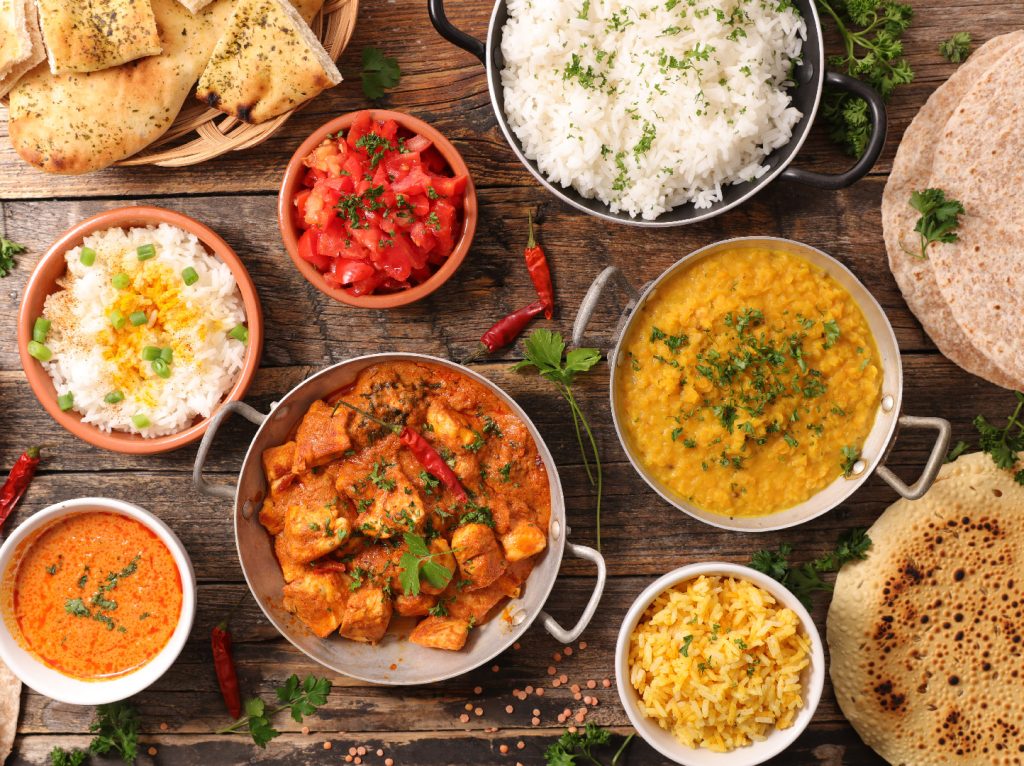
India is home to a wide variety of climates, which means that a diverse assortment of ingredients is available all over the country. The result? A lot of different types of food. The cuisine in India is so rich and vibrant that it almost seems like it has evolved over time just as much as the land itself. In this article, you will learn some of the most important factors that have influenced the evolution of Indian cuisine.
The Indian Kitchen is Complex
Indian cuisine is complex. This is because India has been invaded and colonized by almost every civilization in history, meaning that many different cultures influenced its tastes.
Additionally, there are several regions within India, each with its own distinct set of dishes and spices. Multiple cooking methods are used: boiling, frying, grilling, cooking with oil or ghee (clarified butter), etc., which makes Indian food even more diverse than it already is.
Indian Cuisine Developed as a Result of Ayurvedic Rules
Indian cuisine has been influenced by many different cultures over the centuries, but Ayurvedic principles of balance primarily shaped it. This ancient system of medicine is based on the idea that all things in life need to be balanced in order for the body to function optimally. For example, in Ayurveda, food should consist of a balance between sweet and salty flavors.
Indians have been at the Forefront of Agriculture Since Ancient Times
Indians have been at the forefront of agriculture since ancient times. They were growing rice, wheat, potatoes and mangoes thousands of years ago. The Indians have preserved these crops since then, which is why they still remain part of Indian cuisine today.
Street Food is Considered an Art in India
Indian street food is a big part of Indian culture. It’s also one of the best ways to experience the local flavor. Street food can be found in every corner of India, and each city has its own specialties. In Mumbai, you’ll find snacks like vada pav (a fried potato patty with a burger), bhelpuri (a mix of puffed rice and vegetables) and sabudana khichdi (a dish made with sago flour).
Indian Cuisine is as Rich and Vibrant as the Land Itself
As per the professionals at Chef Online, “The evolution of Indian cuisine has been influenced by geography, climate, culture and time.” It’s complex, with influences from ancient Buddhist teachings to modern global trade.
Indian food is an amalgamation of various cuisines, including Mughalai (Central Asian), Awadhi (Central Asian), Punjabi (North Indian) and South Indian. There are many regional dishes that have evolved over time in different states across India, such as Malabar prawn curry from Kerala or Goa’s vindaloo chicken curry.
What is most interesting about Indian food is that it’s not just about the ingredients themselves; it’s also about how they are prepared and served. This unique approach means that Indian cuisine will never be duplicated elsewhere in the world because no other culture shares its methods or traditions with such skillfulness.
Indian cuisine is a fascinating subject and has evolved over many centuries. It’s rich and varied, with influences from the Turks, Persians, Arabs and British—and of course, from its own indigenous peoples. If you want to give it a try, you can order Indian takeout and have a relaxing evening at home.










